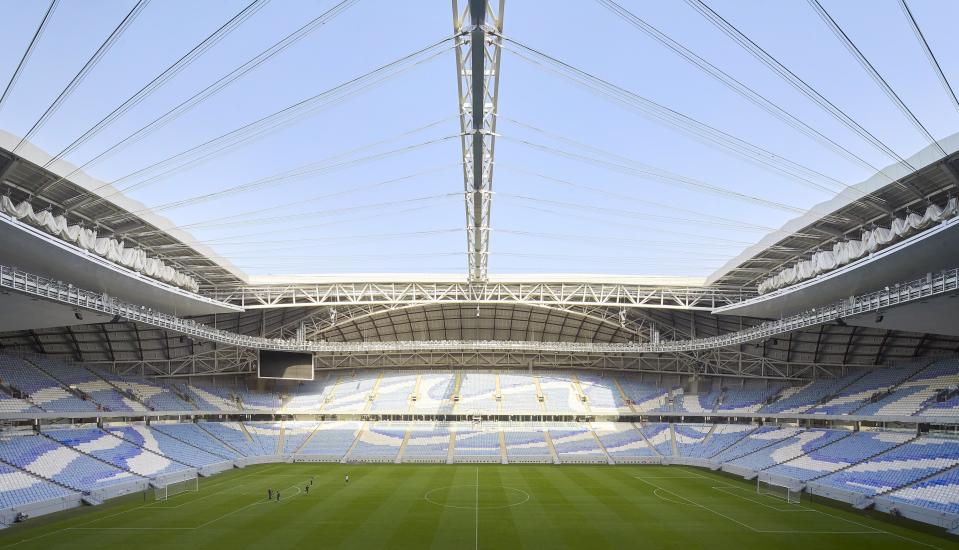Zaha Hadid Architects Completes This Majestic Stadium for Qatar’s 2022 World Cup
Soccer is a sport that, when played at its best, has a degree of grace and fluidity that brings people together in unified enjoyment. Much the same can be said about great architecture. Which is what makes the pairing of a Zaha Hadid–designed stadium in the forthcoming World Cup—the largest soccer tournament in the world—so exciting for lovers of soccer and architecture alike.
The World Cup happens once every four years. During the intervening years, while each country‘s team is busying itself to secure one of the 32 spots in the competition, the host nation is also preparing to host the millions of fans who will come to support their respective flags. In 2010, Qatar won the bid for the 2022 World Cup (beating out the United States, South Korea, Japan, and Australia). Awarding Qatar the tournament raised so many eyebrows that the ensuing investigations eventually brought down Sepp Blatter, the former president of FIFA (the international governing body of soccer) for his role in widespread corruption charges. Nevertheless, Qatar won the bid and began working on the logistics for the most viewed tournament in the world. And all that started with a marquee stadium.

In 2013, Zaha Hadid Architects (ZHA) unveiled her design for Qatar's Al Wakrah Stadium, (three years before her death). The Iraqi-born architect created a stadium that addressed the sweltering heat of the Middle East while honoring the region’s history. In creating the state-of-the-art stadium 12 miles south of Doha, ZHA teamed with the German-based structural engineer firm Schlaich Bergermann Partner to create a movable roof. By using pleated polytetrafluoroethylene (PTFE) fabric, the rooftop can be extended to mimic the look of a sail, while simultaneously shielding players and spectators in the stadium as well. The stadium will pump air-conditioned air, which will be collected, recycled, and cooled once more throughout the space.

Sensing that their high-profile stadium could be a cultural beacon for the Qataris, ZHA made sure to scour the surroundings for inspiration. The result was an eye-catching structure whose pleated shape recalls the hulls of dhows, the traditional boats of the region. "The dhow is an abstracted reference, but the shell-like enclosure of a hull is a direct analogy to the stadium roof being made up of a collection of shells," says Jim Heverin, director at Zaha Hadid Architects. "Internally the structure is expressed in ribs like the structure of a boat’s hull, and externally, the cladding is pleated like a sail."

One major argument against awarding less developed countries the World Cup tournament is that after the competition is over, hundreds of millions will have been spent to build a stadium and the colossal structures fade into disuse and obscurity. ZHA saw that criticism as an opportunity to do something special. Al Wakrah Stadium will hold 40,000 seats during the World Cup, but after the competition, half of those seats will be removed and transported to a developing country in need of sporting infrastructure. "We built the temporary seating on a grid so that it could be easily shipped and re-erected in another location," says Heverin. No matter its capacity, Zaha Hadid Architects' Al Wakrah Stadium is an example of a sporting environment enhanced by the brilliance of bold modern architecture.
Originally Appeared on Architectural Digest
